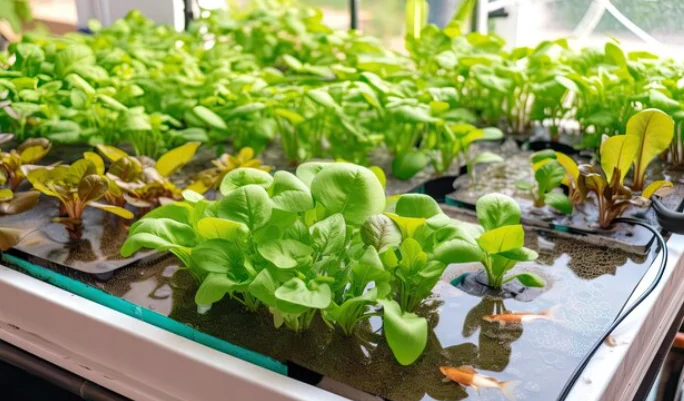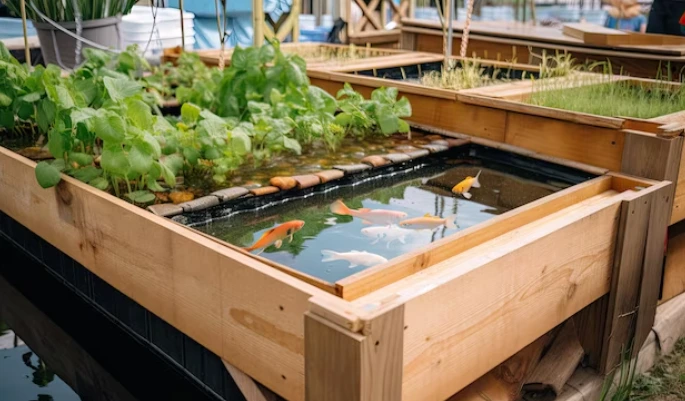Aquaponics is an innovative and sustainable approach to farming. Aquaphonics combines fish farming (aquaculture) with plant cultivation (hydroponics) in a symbiotic environment. This method is particularly relevant in Singapore. Where space is limited and efficient use of resources is crucial. Singapore’s commitment to sustainable urban farming makes aquaponics an ideal solution.
What is Aquaponics?
Aquaponics is a system where fish and plants grow together. Fish waste provides an organic food source for the plants. In return, the plants clean the water for the fish. It’s a natural cycle that mimics real ecosystems.
How aquaphonics looks like:


The Aquaponics Cycle
Water from the fish tank flows to the plant beds. Here, bacteria convert fish waste into nutrients for plants. The plants absorb these nutrients, purifying the water. Then, the clean water returns to the fish tank.
Local Aquaponics Farms & Supporting Local Food Production
Singapore’s focus on sustainable development has led to a rise in aquaponics farms. These farms produce fresh, local produce and fish, reducing the need for imports.
Several farms in Singapore such as Fairmont Singapore and Swissotel The Stamford uses aquaponics. They grow leafy vegetables and breed fish like tilapia, trout and catfish. These farms show how aquaponics can work in urban areas. The farms usually support the “30 by 30” goal which is for Singapore to produce 30% of its own nutritional needs by 2030. By doing aquaponics, it also is a sustainable and pesticide-free solution. It results in higher yields and requires less water, space and labour.
Challenges and Solutions
Aquaponics faces challenges like any farming method. Some challenges like maintaining water quality, growth of algae in the tank, nutrient deficiency in the plants and managing fish health will pose some challenges to the farms.
There are resources online that farmers can use to help overcome these challenges. The farm will have to ensure that the plants and fishes are well by overcoming these challenges.
The Future of Aquaponics in Singapore
Aquaponics in Singapore shows promising potential as the nation explores sustainable food production solutions. Limited land in Singapore poses challenges for traditional agriculture, making aquaponics an appealing alternative. In aquaponics, the fish-plant relationship enables nutrient cycling, minimizing the need for external fertilizers and water. In Singapore’s pursuit of food security and environmental sustainability, aquaponics provides a space-efficient, resource-saving method for cultivating fresh produce. Government and private investments drive research to enhance aquaponic systems.
FAQ
Starting an aquaponics system requires some basic components. You need a fish tank, plant beds, a water pump, and pipes.
Choosing the right Fish and Plants: Select fish and plants that suit your climate. In Singapore, tilapia and leafy greens like lettuce work well.
The Importance of Balance: Balance is key in aquaponics. The number of fish and size of the plant area must match. This ensures the system works efficiently.


